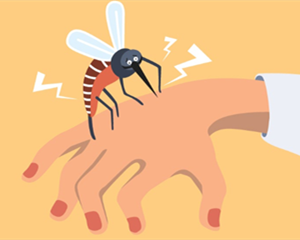Let's take just one example: healthcare. You could eradicate malaria – hell, you could attempt to cure all diseases. Let's say our aim is to protect humanity from the next pandemic, create a new field of human biology, transform the human experience by curing, preventing or treating all known diseases. If it sounds like I'm getting carried away, all these ideas are projects that scientists are thinking about and even working on, but are hampered by lack of resources.
我們來舉個例子:醫療保健。你可以根除瘧疾——該死的,你可以嘗試治愈所有疾病。假設我們的目標是保護人類不受下一次流行病的影響,創造人類生物學的新領域,通過治愈、預防或治療所有已知疾病來改變人類的經歷。聽起來我似乎有些忘乎所以了,這些想法都是科學家們正在思考甚至正在從事的項目,但卻因為缺乏資源而受阻。
The full impact of Covid-19 is still playing out. At the time of writing, more than 2 million people have died, while hundreds of millions have had their lives disrupted or economically ruined. The economic impact is at $2tn and rising. But the tragedy could have been even worse. Unchecked, coronavirus could have caused 40 million deaths in 2020, according to a report from the World Health Organization (WHO). The virus itself could have been more virulent, and more deadly, and the miserable fact is that just because we've had this coronavirus doesn't mean we can't get another, even worse, pandemic. Covid-19 has changed the world, and its tragedy will be felt for years, but we need to use it to raise awareness of the threat of pandemic diseases. It gives us an inkling of the threat to the world from the climate crisis. Our response to this pandemic shows we can adapt and change our lifestyles, and it shows that, when needed, governments can find money to spend – and particularly on public health projects.
新冠肺炎疫情的全面沖擊仍在顯現。截至本文撰寫時,已有200多萬人死亡,數億人的生活被毀,經濟也受到破壞。其經濟影響達到2萬億美元,而且還在不斷上升。但悲劇本可以更糟。根據世界衛生組織(WHO)的一份報告,新冠病毒如果不加以控制,2020年本會導致4000萬人死亡。這種病毒本身的毒性可能會更強,也更致命。一個悲哀的事實是,雖然新冠病毒爆發了,但這并不意味著以后不會再爆發其它哪怕更糟糕的流行病。新冠已經改變了世界,這一災難將持續多年,而我們需要利用它來提高人們對流行病威脅的認識。因為它,我們對氣候危機給世界帶來的威脅有了了解。我們對這一流行病的應對表明人類能夠適應和改變自己的生活方式。同時表明政府在需要時能夠找到資金用于支出,特別是在公共衛生項目上的支出。

We knew the risk posed by pandemics. The UK maintains a risk register, a catalogue and assessment of the emergencies that could befall the country, and top of the list, at the start of 2020, was an influenza pandemic. Large-scale exercises in 2007 (code-named Winter Willow) and 2016 (Cygnus) showed what might happen to the health service, the economy and the population if a 1918-style disease took hold. We knew what was at stake, and now we have firsthand experience.
我們知道流行病的危險。英國有一本風險登記冊,對可能發生在該國的緊急情況進行了分類和評估,2020年初排名第一的是一場流感大流行。2007年和2016年的大規模演習(代號分別為“冬柳”和“天鵝座”)表明了如果有一場像1918年那樣的疾病爆發時醫療服務、經濟和人口將會出現的境況。我們知道什么正處于危險當中,我們現在有一手經驗。
In 2018, one disease infected 228 million people and killed about 405,000, mostly children under five, and mostly in sub-Saharan Africa. That disease, malaria, has been with us for ever. The disease has killed perhaps half of all humans who have ever lived. Malaria is the world's greatest scourge, but it is preventable and curable. In fact, we've done well: deaths from malaria have been halved in the past 20 years. But still it clings on and, if we're looking for projects to stretch us and create a genuine legacy, the defeat of humanity's most deadly enemy has a certain ring to it.
2018年,有一種疾病感染了2.28億人,導致約40.5萬人死亡,其中大部分是5歲以下的兒童,且主要在撒哈拉以南非洲地區。疾病瘧疾永遠伴隨著我們,它已經奪去了大約一半人類的生命。瘧疾是世界上最大的禍害,但它是可以預防和治愈的。其實,我們已經做得很好了:瘧疾致死人數在過去20年里減少了一半。不過它仍然存在。如果我們在尋找能最大限度發揮自己的能力并能創造真正遺產的項目,那么打敗人類最致命的敵人是一件很有意義的事情。












